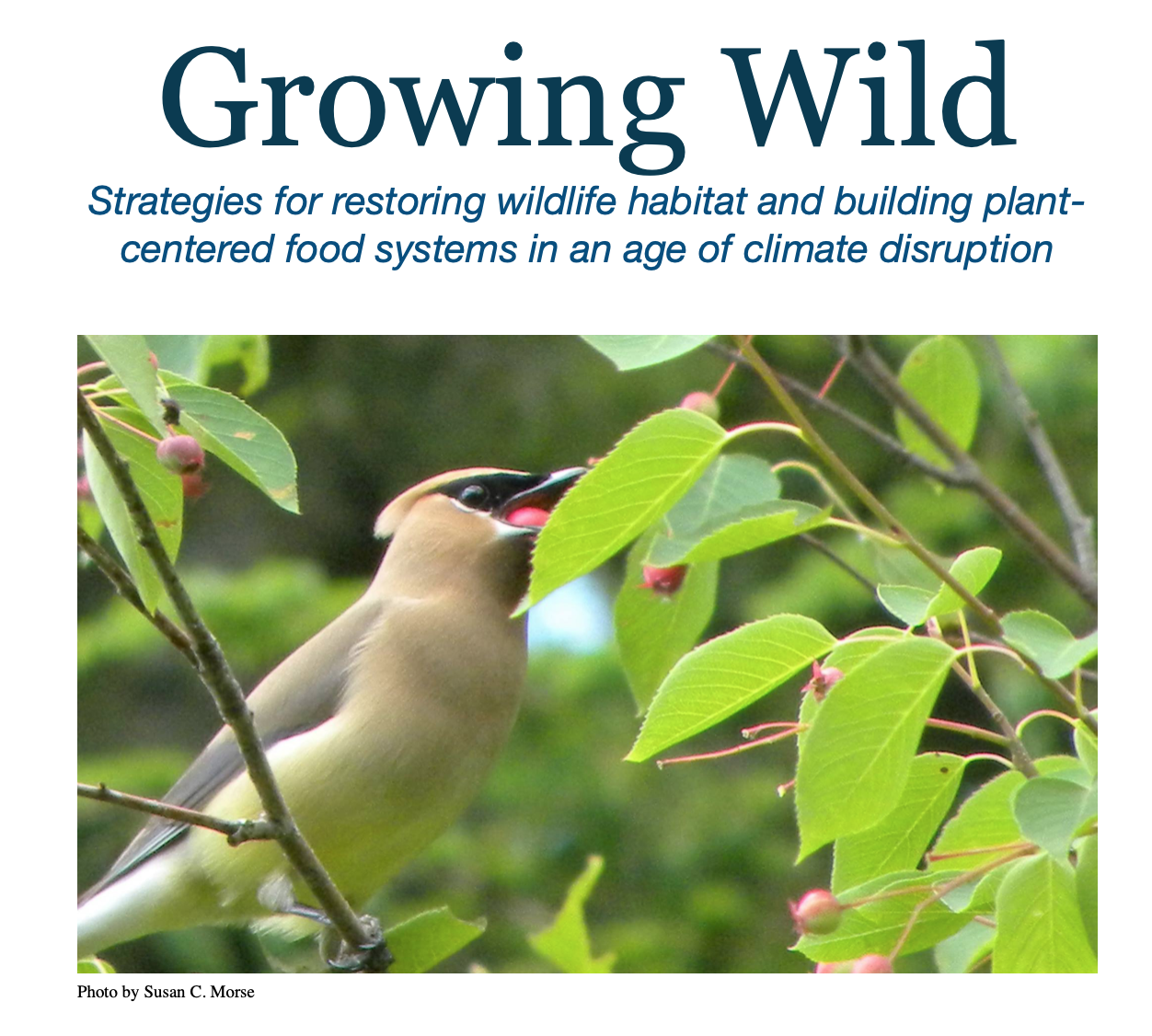Writing growing wild toolkit
Our book, “Growing Wild”, guides land stewards in establishing resilient food systems. Filled with practical information for engaging large scale ‘wild’ and tended habitats that yield human food and medicine.
Photograph by Susan C. Morse
Native Wild Food
A cedar waxwing thrives on this wild raisin viburnum (Viburnum nudum var cassinoides), or nannyberry’, which when ripe, is sweet and creamy. An important winter food for birds, and a nutritious edible for humans.
funding goal: $30k usd
Exerpt
A wild-cultivated hybrid system concentrates productive species—obviously not as much as a home garden or farm field—but moreso than wild edibles dispersed through a forest or an old pasture or road edge. Properly designing access, mapping the system, developing a system-wide harvest plan, teaching others how and where to harvest and then learning how to use what is harvested (at first) becomes important in this model. The system grows and changes over time, stabilizing eventually into a thriving environment that links many life forms in synergistic and symbiotic relationship, providing rich edges filled with diversity, available for harvesting by humans and animals.
The powers of observation factor significantly into system design. Noting many intersecting elements such as seed sources, emerging plants in un-mown areas, nesting and denning patterns of surrounding animals and birds (which yield important nutrient deposition), leveraging emerging successional plants like willow, birch, and poplar for perennial ramial wood, browsing, and nutrient sources. A wide familiarity with medicinal, adaptogenic, flavors, and food and medicine processes feeds such observation, as previously invisible resources become visible to the trained eye.

